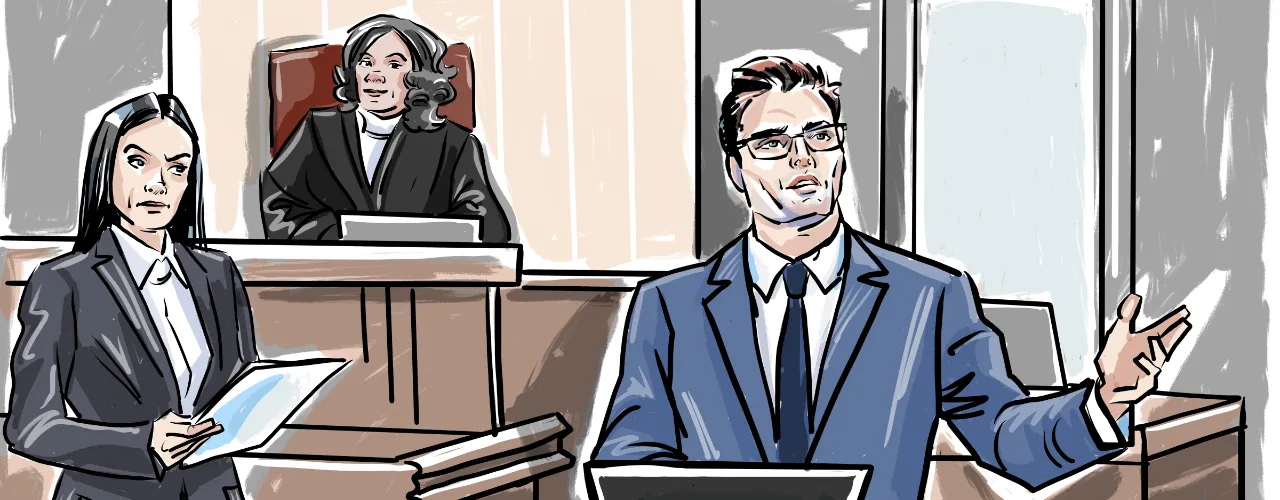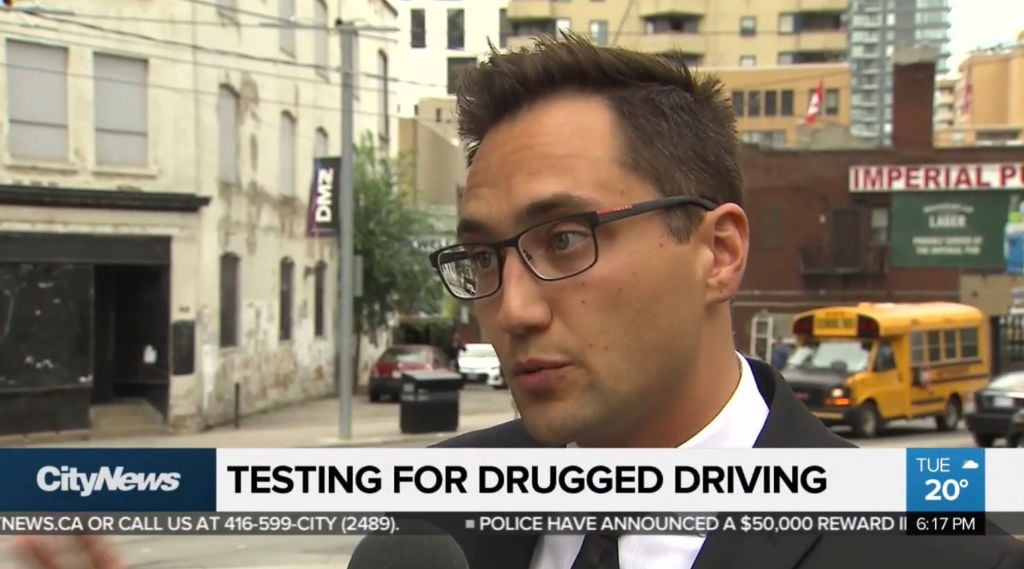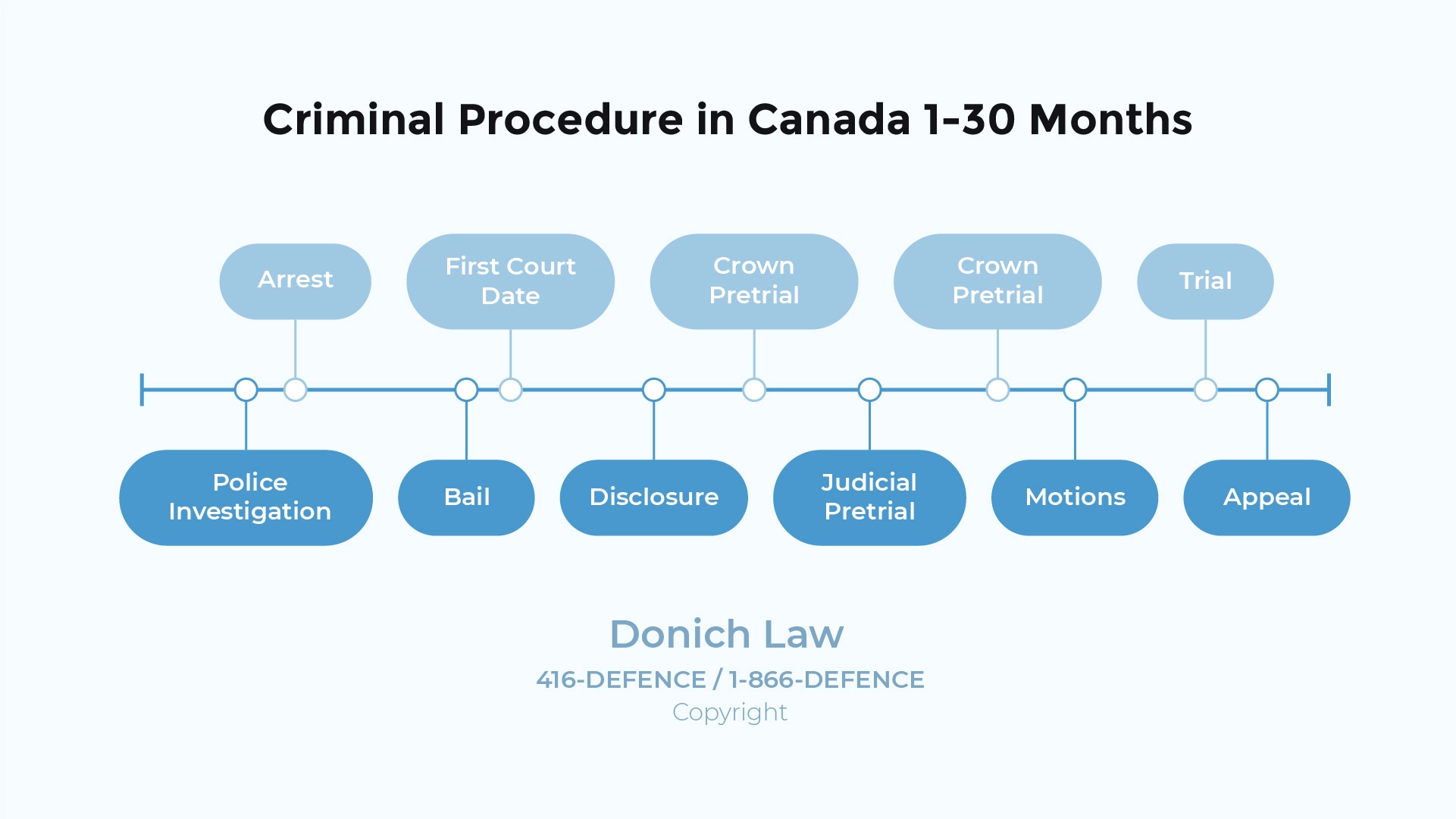
Defend Impaired Driving Causing Death
Frequently Asked Questions
Impaired driving causing death is a criminal offence in Canada contained under s. 320.14(3) of the Criminal Code. It is a subcategory of the impaired driving offence. That offence makes it illegal for any driver to operate a vehicle while they are under the influence of drugs and/or alcohol. There are certain legal limits based on each substance that will attract criminal liability if a driver exceeds them. The most common is the standard for alcohol impairment, which is 80 mg of alcohol within 100 mL of blood. The standard for drugs or a combination of substances is much more varied and is contained elsewhere within the Code.
When someone has caused the death of another person because of their impaired driving, whether they are another driver a passenger, or a pedestrian that driver will be charged under the section of the Code mentioned above. However, different penalties will be applied where impaired driving results in bodily harm to another person. Bodily harm is any injury to a person that interferes with their health or comfort and is more serious than a minor cut or bruise. For example, if Person B is a passenger and suffers a concussion and broken arm because of a crash caused by Person A’s impaired driving, Person A will be charged with impaired driving causing bodily harm under s. 320.14(2) of the Code.

- CityNews: How Police will test for Drugged Driving?
- CP24: Civil Sexual Assault Lawsuit at St. Michael’s in Toronto
- CityNews: Jordan Donich comments to CityNews regarding challenges with Sexual Assault Trials in Toronto
- CityNews: Jordan Donich provides expert commentary to CityNews regarding Sexual Assault Prosecution.
- Breakfast Television: Role of Mental Health in Court Proceedings.
- Global News National: Bruce McArthur will not serve consecutive sentences.
- CTV News National: Handgun ban supported by majority of Canadians: Nanos survey.
- CP24: Sentencing Hearing for Chair Girl.


What Happens When Someone is Charged with Impaired Driving Causing Death?
Once a person has been involved in an accident caused by their own impaired driving, the police will become involved. The driver will most likely be arrested on the scene. If it can be easily determined that someone has died because of the accident, the driver will be charged with impaired driving causing death. However, given the chaotic nature of accidents, the status of any victims may be difficult to determine. It is common for victims to be transported to a hospital where they may later die from their injuries. In those cases, the accused driver will simply be charged with impaired driving and that charge will be upgraded accordingly later.
Once the accused has been arrested, they will be brought to the police station and submit to a breathalyzer or other appropriate test to determine their exact level of impairment. From there, the accused is likely to be held for a bail hearing. A bail hearing involves the accused being brought before a judge and the judge determining what, if any, conditions can be appropriately applied to the accused for them to be released back into their community pending their trial. After the bail issue has been resolved, the accused will attend their first appearance and any additional set dates deemed necessary leading up to a trial or other resolution. Given the seriousness of this type of offence, it is important that any accused person hire a lawyer to help guide them through the process and to ensure that they are informed about their constitutional rights.
Stages of the Criminal Justice System

Is Bail Available for Someone Charged with this Offence?
In Canada, all persons have the right not to be denied bail without cause. This means that bail on the least strict conditions possible is presumptively available to all accused persons, unless a judge determines that they should be denied bail and held pending trial. During a bail hearing, a judge will examine the facts and circumstances of each case, which includes the circumstances of the offender such as their previous criminal record. These facts allow a judge to determine the most appropriate conditions to issue for each accused person. Common bail conditions for impaired driving cases will usually include at the minimum, a requirement that the accused attend all their court dates and not reoffend, as well as a prohibition on driving.
The availability of bail depends on each case and is governed according to the Antic principles. Within these principles are three grounds that determine an accused’s eligibility for bail. The first is that the judge must be satisfied that an accused will freely attend all the necessary appearances related to their case. The second concerns whether there is a belief that the accused will not reoffend. Both grounds can be determined by looking at the circumstances of the accused, including their criminal history. The final ground deals with the public interest in the release of the accused. In some impaired driving cases, where the accused is responsible for several deaths, a judge may deny the accused bail on the basis that their release would undermine public confidence in the criminal justice system. Therefore, the facts of the case are particularly important to this ground.
What are the Penalties for Impaired Driving Causing Death?
There are several criminal penalties attached to an impaired driving causing death offence. The serious nature of the offence has led it to be classified as an indictable offence, which is the classification reserved for the most serious crimes under Canadian law. The penalties for this offence are set out under s. 320.21 of the Code. The maximum sentence an offender can receive for this offence is life imprisonment. Impaired driving causing death also carries a minimum punishment of a $1,000 fine for a first offence, 30 days imprisonment for a second offence and 120 days for any additional offences. In addition to the main punishment, a court will also issue any number of ancillary orders that may include such measures as a DNA order or a driving prohibition.
The exact sentence an offender receives will depend on the facts of their case. Receiving the maximum sentence available under the Code is rare. Instead, a court will look to the aggravating and mitigating factors at play that argue for a stronger or more lenient sentence respectively. Examples of aggravating factors in these cases include the level of impairment of the offender if it exceeds 120 mg of alcohol, whether a person under 16 was a passenger of the offender during the offence, or if the offender was being paid to drive the vehicle. Mitigating factors may include an offender’s lack of previous criminal records or if they elect to plead guilty to the offence.
What’s a Crime in Canada?
Is Impaired Driving Causing Death Considered a Homicide Offence?
Homicide is defined under s. 222(1) of the Code as an action committed by a person when they cause the death of another human being by any means, either directly or indirectly. By that definition impaired driving causing death is considered a homicide. However, it is a distinct offence from murder. Murder requires the offender to intentionally kill someone. That element is not present in most impaired driving cases. However, impaired driving causing death is still a serious offence. Courts are often concerned with the moral culpability of an offender, which is the level of wrongdoing attached to a particular crime. The intentional killing of another person will usually attract the highest level of culpability. Whereas impaired driving causing death does not lead to the intentional death of another, it still attracts a high degree of culpability because it requires a person to use substances to impair themselves and then decide to drive at great risk to both them and the public.
Law Newbie is a free AI research assistant that can help you safely answer questions about criminal law.




Recent Cases
R. v. Byrne, 2021 ONCJ 711
This Ontario Court of Justice case is an example of the sentencing process for offenders who are convicted of impaired driving causing death. The incident leading to the offence involved the offender colliding with a tree and killing his passenger. The passenger was the offender’s partner and mother of his children. The offender pled guilty to the offence and was sentenced to five years imprisonment, with an eight-year driving prohibition, a 10-year weapons prohibition and a DNA order.
As part of the sentencing process the judge had to consider the aggravating and mitigating factors at play in this case to determine the appropriate sentence. The two main mitigating factors in this case were the guilty plea and the offender’s lack of criminal record at the age of 29. However, these factors do not operate to erase the seriousness of the offence. Among the aggravating factors was the fact that the offenders blood alcohol content during the offence was over twice the legal limit and the tragic consequences of the offence. Even when these factors were balanced, the court determined that a significant sentence was required to serve the interests of justice.
R. v. Johnson, 2021 ONCJ 383
This case highlights some of the principles behind sentencing decisions in impaired driving causing death cases. The offender in this case was convicted of two counts of impaired driving causing death and one count of causing bodily harm. The accident occurred when the impaired offender drove his vehicle at a speed of 100 km/h over the limit through an intersection striking three pedestrians. As a result of this offence, the offender was sentenced to six years imprisonment alongside a 10-year driving prohibition and DNA Order.
Each sentence issued under Canadian law is governed by a set of principles that are balanced according to the facts of each case and the offence at issue. These principles include denunciation of an offender’s unlawful conduct, deterring the offender and public from committing similar offences, rehabilitating the offender, and promoting within them a sense of responsibility, among others. In general, sentences should reflect the seriousness of the criminal conduct on the facts, but not be excessively harsh. This speaks to the need to balance both the mitigating and aggravating factors of each case like those discussed in the case above. Regarding impaired driving, the most important principles are denunciation and deterrence because of its consistent threat to our society. “That said, his moral blameworthiness is significant. He made the deliberate, intentional decisions to drive after drinking, and to drive at a speed which given the time and location was extremely dangerous. As a result, the lives of two young men were lost and another young man’s life was terribly affected. The horrendous impact of this tragedy on the Zhu Li and the Kussain families is another consequence.” [at para 62]











